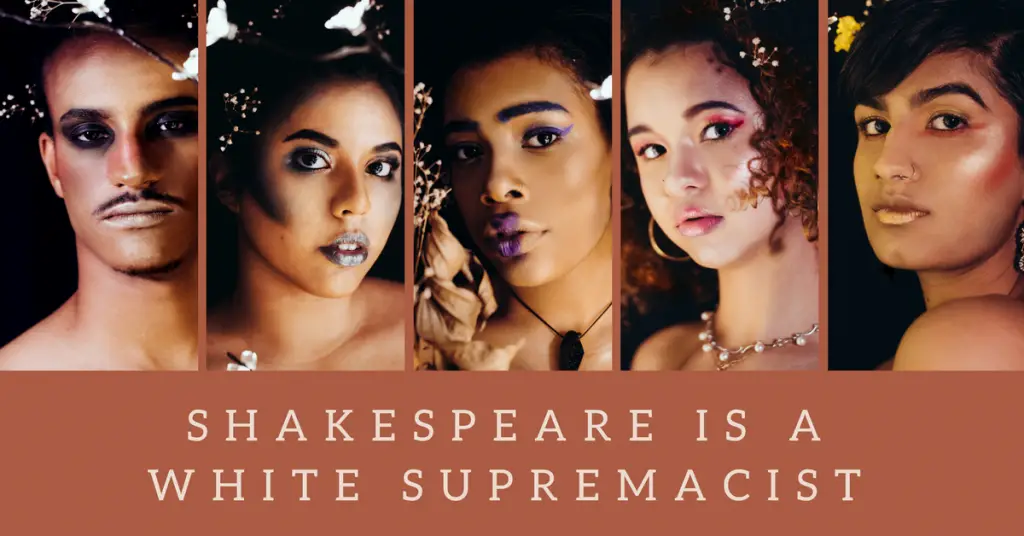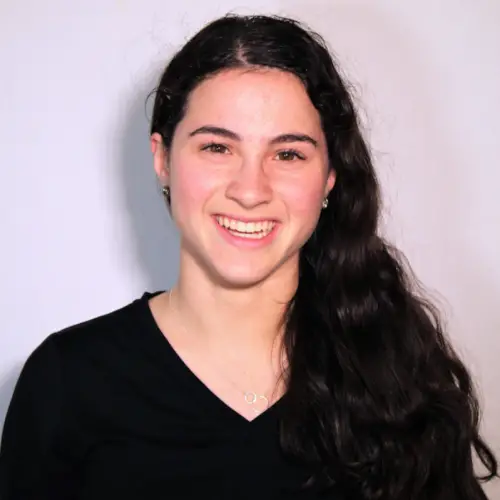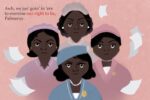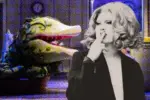“Great theater is about challenging how we think,” actor Willem Dafoe once said. With his new play, “Shakespeare is a White Supremacist,” student director Andrew Watring does just that. The American University junior uses his play as a lens through which to confront the racial dynamics of classical theater.
“Shakespeare is a White Supremacist” aims to give people of color, particularly African Americans and Asians, a chance to share their ongoing struggles within the world of theater. Actors of color often face discrimination; in many productions, they are pigeonholed into racially typecast roles, such as the black man playing Othello or Caliban. Watring, a theater arts major, hopes to make his audience question the conventional norms of the Shakespeare’s classic plays.
Kayla Lichtman: Tell me about your inspiration for “Shakespeare is a White Supremacist.”
Andrew Watring: I was at a one-woman show about blackness by an American University graduate named Manna Middlebrooks. She came up to me and another friend of color of mine in the audience and asked us point-blank what we were doing for students of color on campus. I didn’t have a good enough answer.
At the time, I was directing Coriolanus. I tried to make it about racial issues, but I didn’t think it went far enough. Right after coming out of that one-woman show, I knew I needed to be doing more. Since I was already the artistic director of a Shakespeare troupe, I wanted to see what I could use to discuss the themes that I wanted to, while still staying true to a discussion of classical theater.
I knew I wanted to discuss racism and I wanted to discuss Shakespeare. The title “Shakespeare is a White Supremacist” came to me early in the process and it would allow me to explore how white supremacy, racism, discrimination and historical context figure into performing a Shakespeare play. From there, the writing process just sort of came out.

KL: What had been your relationship with Shakespeare prior to writing the play?
AW: I had a really good teacher in high school, who exposed me to Shakespeare in text. Currently, I’m the artistic director of Rude Mechanicals, which is the Shakespeare troupe at American University. So Shakespeare was my entry point into talking about these issues because that was the platform of my troupe.
KL: The article by The Eagle, American University’s student newspaper, said that the play aims to give people of color a voice in classical theater. Can you tell me a little bit more about that?
AW: Since I had already had troubling experiences in regard to classical theater and race, I knew a few things about this, but I really didn’t know the depth of how inaccessible classical theater was to people of color.
When you delve into it, it can be problematic for people of color to participate in Shakespeare without knowing the context. Even if they do know the context, they still risk being pigeonholed into certain roles.
I knew I wanted to write a new play about my findings, so I pitched it to my board as an experiment. The format of the play was actually extremely collaborative. To support my writing, I sent out a survey to a bunch of the actors of color that I knew, asking them about their relationship to classical theater and what they thought.
I collected those stories, and they formed the first draft of “Shakespeare is a White Supremacist.” When I got my actual cast, we went through a revising process where we had a group called AU Connects come in; we discussed our own relationship to race and the experiences that we had in theater. Most of those conversations then appeared in the play.
Going back to the title of the play, I think it served as a metaphor for how racism and white supremacy have made it psychologically hard for actors and other theater professionals to use theater. It’s a very white-centric and western craft — at least the type of theater we’ve done in America for so long.
Knowing this, I tried to subvert as many Western expectations around theater as I could. The production was done in the round. There were artificial lights in mason jars around the stage. And there was no fourth wall; the actors just sort of went into the audience. It was very meta-theatrical.
KL: To what extent does the play focus on challenging Shakespeare? Or is Shakespeare simply a lens through which to look into theater’s past?
AW: The way the show is set up, there’s three different worlds in which the characters exist. The first is the world of a play where a group of actors is trying to put on “Much Ado About Nothing.”
And then there’s the world of these actors within the characters who aren’t ever named, but it’s acknowledged that they’re not really playing the characters within the play. Lastly, there are the actors themselves.
The drive of the play is these actors trying to do “Much Ado,” but through that lens we can interact with Shakespeare on a lot of different levels. We get to discuss which Shakespeare characters are available for people of color; we get to discuss what it’s like when a person of color walks into the audition room for a Shakespeare play and they’re expected to play the mammy or Othello.
All of the characters were named after Shakespeare characters. I had one black man named Macbeth; his main drive in the play was trying to escape Othello, to make other roles available to him.
There’s a particularly powerful moment in the show where two of the white characters — a director and an actress — ask him what he wants. And the black man just sort of screams “get rid of Othello! It’s on me, it’s all I can feel, it’s all I know.”

KL: Was there a specific response you were trying to evoke? Was it to make people slightly uncomfortable?
AW: Right now, I’m in theater history class and we’re discussing how best to connect with an audience. One of the methods some of my professors espouse is that you have to make the audience comfortable before you can make them uncomfortable; otherwise, they’re not going to believe your show.
I did the opposite of that. I started the play by making everybody uncomfortable. The line “Shakespeare is a White Supremacist” is said in the first two pages of the script. Automatically, the play cuts off a segment of its audience. They are uncomfortable. This is not their world.
Slowly, through the format of the show, we give each character their own time — specifically they say “my time” — and you’re given insight into the minds of a performer of color. I think if the audience were comfortable, they would get complacent; I fought to prevent that. The audience needed to stay awake, even if they were uncomfortable.
A lot of people flat-out refused to come to the show. People made a big stink on social media, attacking me and telling me I had no right to discuss Shakespeare in this way, that I couldn’t come after someone who lived 400 years ago — which is an awful argument.
I really did try to spur people to be uncomfortable, but making the white audience members uncomfortable had a specific utility outside of them just being uncomfortable. It was about something more theatrical and I think that’s why it was a very powerful experience.
You’re there and you’re uncomfortable and you have an actor looking at you in the face, which goes back to that moment I had with the one-woman show, where someone looked at me and asked, “What are you doing?” It wasn’t a line. It was a question to me and I think this whole play mimics that structure.
KL: Were there any particular challenges in making this play?
AW: I think the most challenging aspect of the play was what I perceived as a lack of support among my white peers. This production was heavily supported by people of color: I solicited music from people of color, primarily from my Asian American friend Daniel Sohn.
Also, I had the student government president at the time, Taylor Dumpsen — who was in the news for the racist attacks against her with the noose and the banana — donate beautiful art to us focused solely on people of color.
But I think my white peers were concerned there weren’t roles for them because they’re white. When I went to show this piece, I had a big outpouring of support and attendance from people of color but I think my white peers felt as though they had done the work and they didn’t need to see this production.
This draft of the play was heavily focused on American University and there were lines which were specifically drawn from faculty and student comments that had been told to the people of color on my cast. I wish my white peers had stepped up and said “this is something we need to support, we need to put our money where our mouth is.” But I didn’t really see that sense of urgency.
KL: On the flip side, were there particular moments that were really rewarding?
AW: One of the most rewarding moments for me was when we did a dress rehearsal and a member of our student newspaper came. She was a freshman and a woman of color who wanted to talk about an Indian actress in my show.
This character does this powerful monologue about the lack of understanding when it comes to the Indian experience on stage and how people don’t understand that Asian representation matters too.
The student reporter was an Asian woman. She sent me a long, powerful statement about how this was the kind of theater that made her feel supported and happy and loved. I was sort of swamped with that.
Furthermore, people came up to me afterwards to tell me how moved they were, which was amazing. We are a bunch of college students and we did this completely on our own. Being able to do this reaffirms the power of theater and activism, as well as the power of connecting with people.
In addition, I was very insistent on making the show as accessible as possible, so we had a big free matinee. Seeing the people who came out for that and the response form that was just, wow. It was humbling, but it was also empowering. I was glad I got to see that.
KL: Do you have future plans for this show or any other works in progress?
AW: I’m currently seeking grants for funds to put the show on around D.C. I’m also soliciting funds to do academic research, because I would like to create a framework using “Shakespeare is a White Supremacist” to help high school and college students facilitate discussions around race.
Also, I’m looking to tighten up the meta-theatricality of the play and really hone in on what I want to do about Shakespeare. Also, I think I’m going to swap out “Much Ado About Nothing” for “Midsummer Night’s Dream.”
In regard to other works, I’m a freelance director and writer in D.C., so I’m just looking for work where I can! I also run a website for anyone is interested in my work.

















